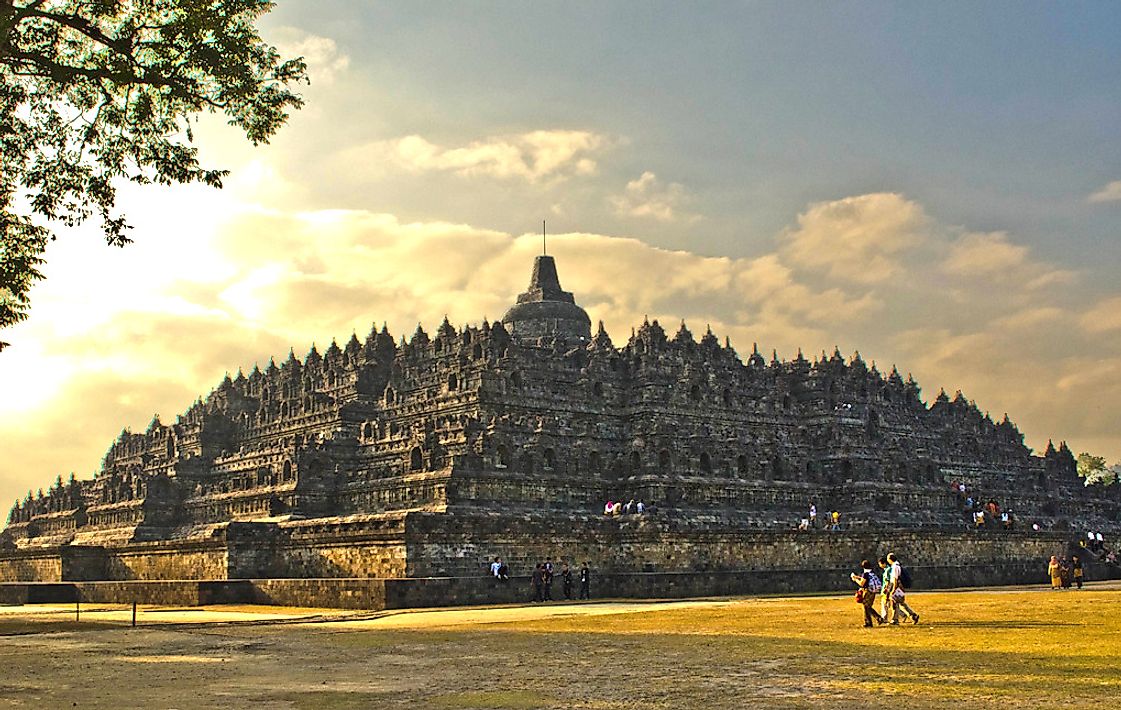Where Is The World's Largest Buddhist Temple?

The Temple Of Borobudur
Borobudur is a massive Buddhist monument, the largest one in the world, located in central Java, Indonesia. The Borobudur Temple is 42 km northwest of Yogyakarta. The structure of the temple is influenced by the Indian Gupta and post-Gupta style of art. The monument was declared as a UNESCO World Heritage Site in 1991.
History Of Borobudur
The world’s largest Buddhist temple was constructed sometime between 778 and 850 CE during the rule of the Shailendra Dynasty. For years after 1000 CE, the temple was left buried under volcanic ash and had forests growing above it. In 1814, a chance discovery by the English lieutenant governor Thomas Stamford Raffles revealed the temple site. Recognizing the historical significance of the temple, archaeologists started the excavations in 1907 and by 1911 had managed to restore the site. In 1983, a further set of restoration activities was also carried out.
Architecture Of The Borobudur Temple
The Borobudur Temple is shaped like a stepped pyramid with three major levels. The levels include a square base, a middle level with 5 square terraces, and an upper level that comes with 3 circular terraces. In total, there are 9 levels, large and small, a number associated with sacredness in Buddhism. The entire temple is built with 2,000,000 cubic feet of gray volcanic stone. At the center of this structure is a large single stupa that is at a height of 115 feet above the base of the temple.
What Does The Temple Architecture Symbolize?
The three major levels of the Borobudur temple represents major stages in life to be encountered prior to the attainment of the ideal of enlightenment or bodhisattva. A pilgrim to the temple is required to start moving up by starting at the eastern stairway and then move clockwise around the 9 levels of the monument. The top can be reached by traversing a distance of 5 km or 9 miles. The lowest level displays hundreds of reliefs of earthly desires that represents “the realm of feeling.” It is these earthly desires that need to be overcome to attain the higher levels in life. The next major level represents the “the realm of form” through a series of reliefs depicting the life of the Buddha and scenes from the Jatakas. “The realm of formlessness” is symbolized by the uppermost level as it lacks much decoration and is quite plain in appearance. However, the terraces of this level are lined with 72 bell-shaped stupas many of which house a Buddha statue inside that is partially visible through the perforated stonework.











